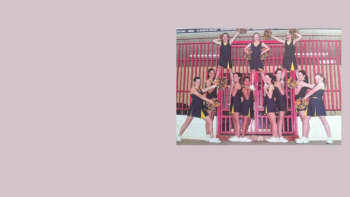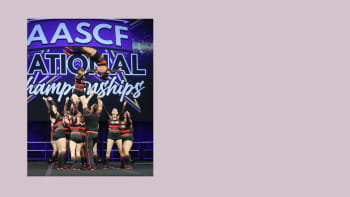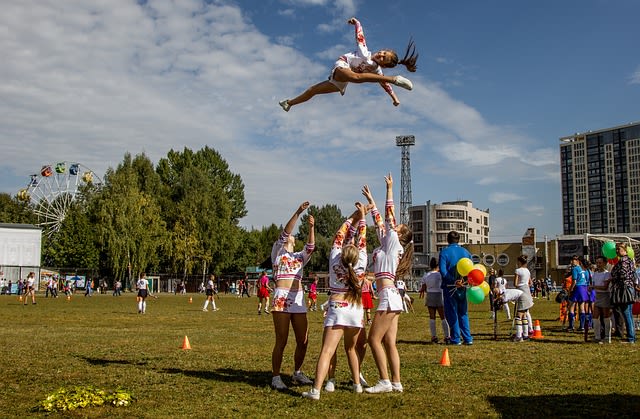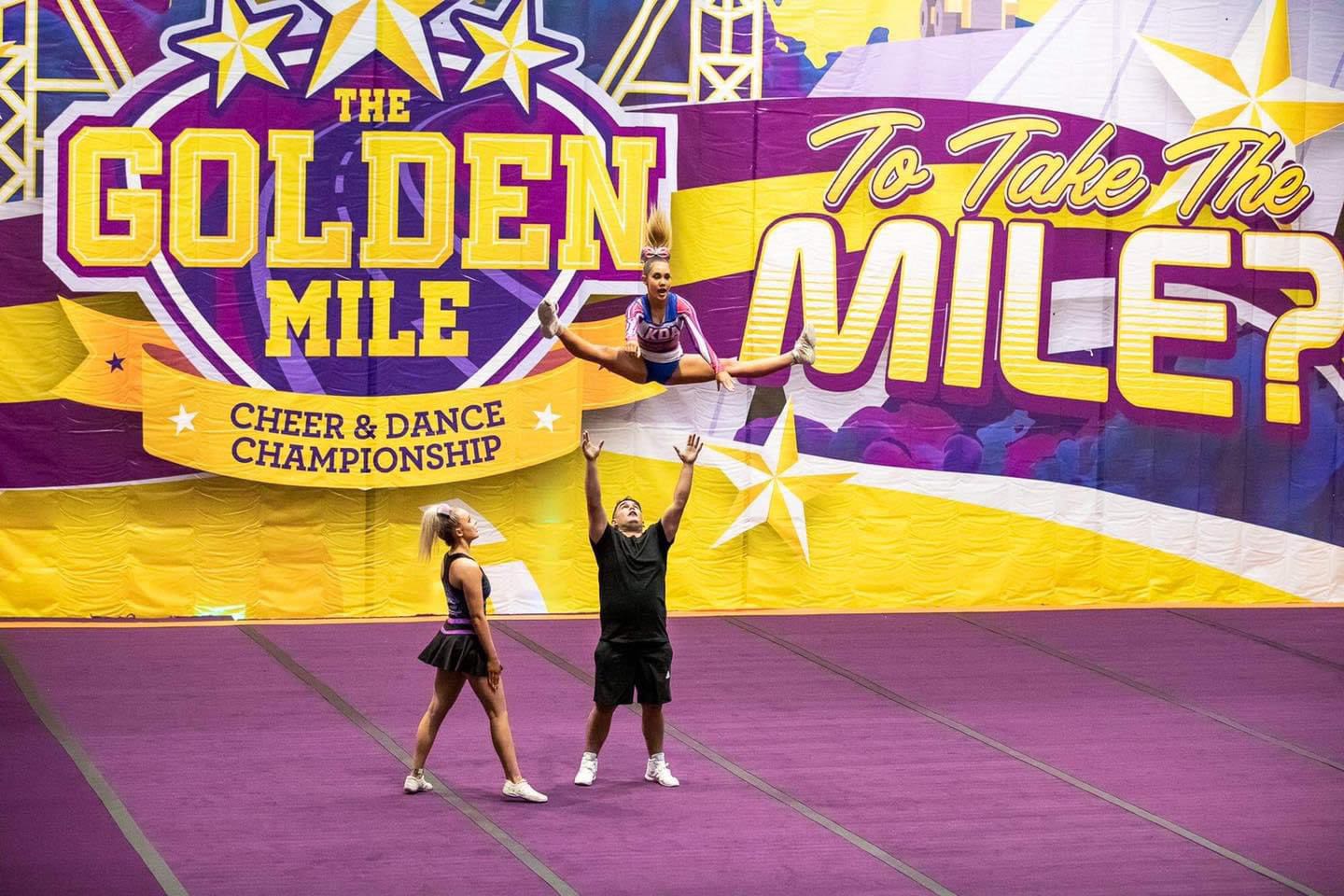From Sidelines to Spotlight: Cheerleading's Goal of Olympic Glory
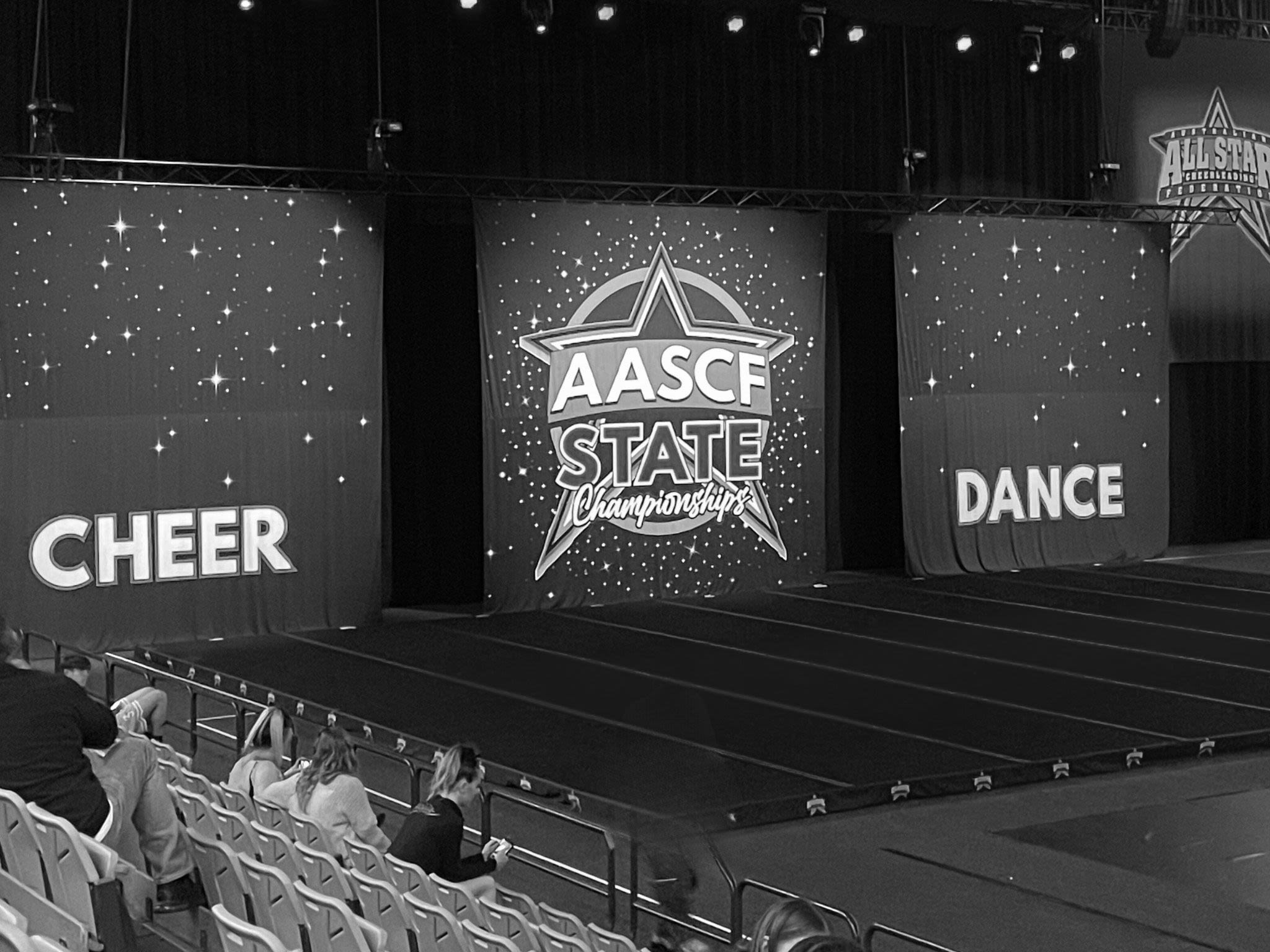
Athletes show their skills at the 2024 AASCF State Championships in Perth! (Video: Tegwen Bescoby)
Athletes show their skills at the 2024 AASCF State Championships in Perth! (Video: Tegwen Bescoby)
The thought of cheerleading may bring to mind images of figure-hugging costumes and sparkly pom-poms - but cheering is far more than a sideline act.
At the Australian All-Star Cheerleading State Championships in Perth, the atmosphere transforms as athletes hit the stage.
High-energy music booms and the crowd erupts into bellows of ‘Hit! Hit!’ as the team twist, turn, and flip on the black mat.
Coaches and parents hold their breath during the elaborate pyramid formations, praying that no-one falls.
Rival athletes clap along, cheering on their competitors.
With hundreds of athletes competing for the chance to showcase their skills at the Australian Nationals, the stakes are high.
A team lifts and flips on-stage at the AASCF State Championships in Perth (Video: Tegwen Bescoby)
A team lifts and flips on-stage at the AASCF State Championships in Perth (Video: Tegwen Bescoby)
Former Kalgoorlie Cheer and Dance cheerleading coach Melinda Manners says Australian cheerleading athletes are dreaming of competing on an even bigger stage than Nationals.
“In my years of coaching, a lot of cheerleaders have the same goal - to be the best elite athlete they can be,” she says.
“They see elite athletes dominating their screens at the Olympics, and that’s where they want to be – doing what they love on the world’s biggest sporting stage with the best of the best.”
Dreams of representing Australia in cheerleading at the Olympics are closer to reality than many people may realise.
Cheerleading, alongside lacrosse and muay thai, officially received recognition as a sport by the International Olympic Committee in July 2021, which is an essential first step in Olympic inclusion.
The Australian All-Star Cheer Federation (AASCF) defines all-star cheerleading as “a competitive team sport that involves females and/or males performing a two-and-a-half minute routine composed of stunting, pyramids, group tumbling, jumping and a dance break.”
The next step in the road to the Olympics is to select an international, non-government organisation to oversee the sport.
The International Cheerleading Union (ICU) was selected as cheerleading’s sports federation in 2021.
In a statement following the decision, International Cheer Union president Jeff Webb says the decision was a “monumental milestone” for the sport.
“We are truly honoured to receive this recognition by the IOC,” he says.
“This will greatly assist us as [the ICU] strive to create opportunities for healthy participation and competition for millions of cheerleading athletes worldwide.”
Once it is recognised as a sports federation, the ICU can petition for admittance into an upcoming Olympics.
Under the Olympic Charter there are 35 criteria that a sport must meet to be permitted into the Games, including how much value the sport would add to the Games, how long the sport has existed, the global popularity of the sport, and the logistical factors of broadcasting the sport.
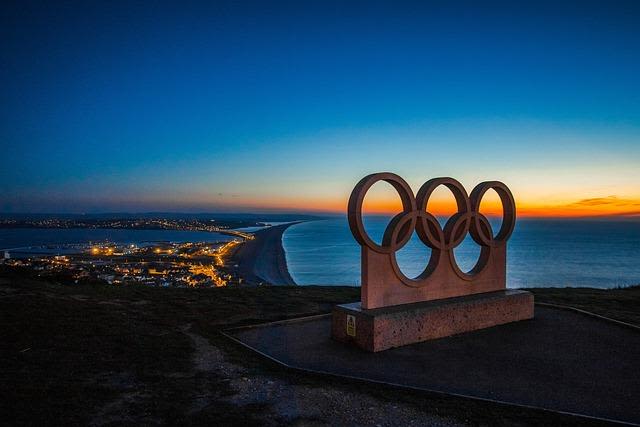
Cheerleading meets several of these criteria.
It has existed for 126 years since US universities used ‘Yell Leaders’ to rile up audiences.
Competitive cheerleading was first televised in 1983 on ESPN and within four years the first All-Star program was created.
Competitive cheerleading debuted in Australia in 2002 with only three teams, but by 2004 Australia was ranked 6th in the world for the sport.
West Coast Fury cheerleading gym owner Christina Dimopoulos says the sport has “evolved massively” since the 2000s.
“There were only four cheerleading gyms in the state when I started in 2007 and that number has now grown to between 15 to 20,” she says.
“The skills and levels have evolved also, with the difficulty and creativity reaching new heights.”
By 2016, there was more than 60,000 competing cheerleaders across Australia, with the AASCF estimating the sport had an annual growth rate of between 25-30 per cent over the decade prior.
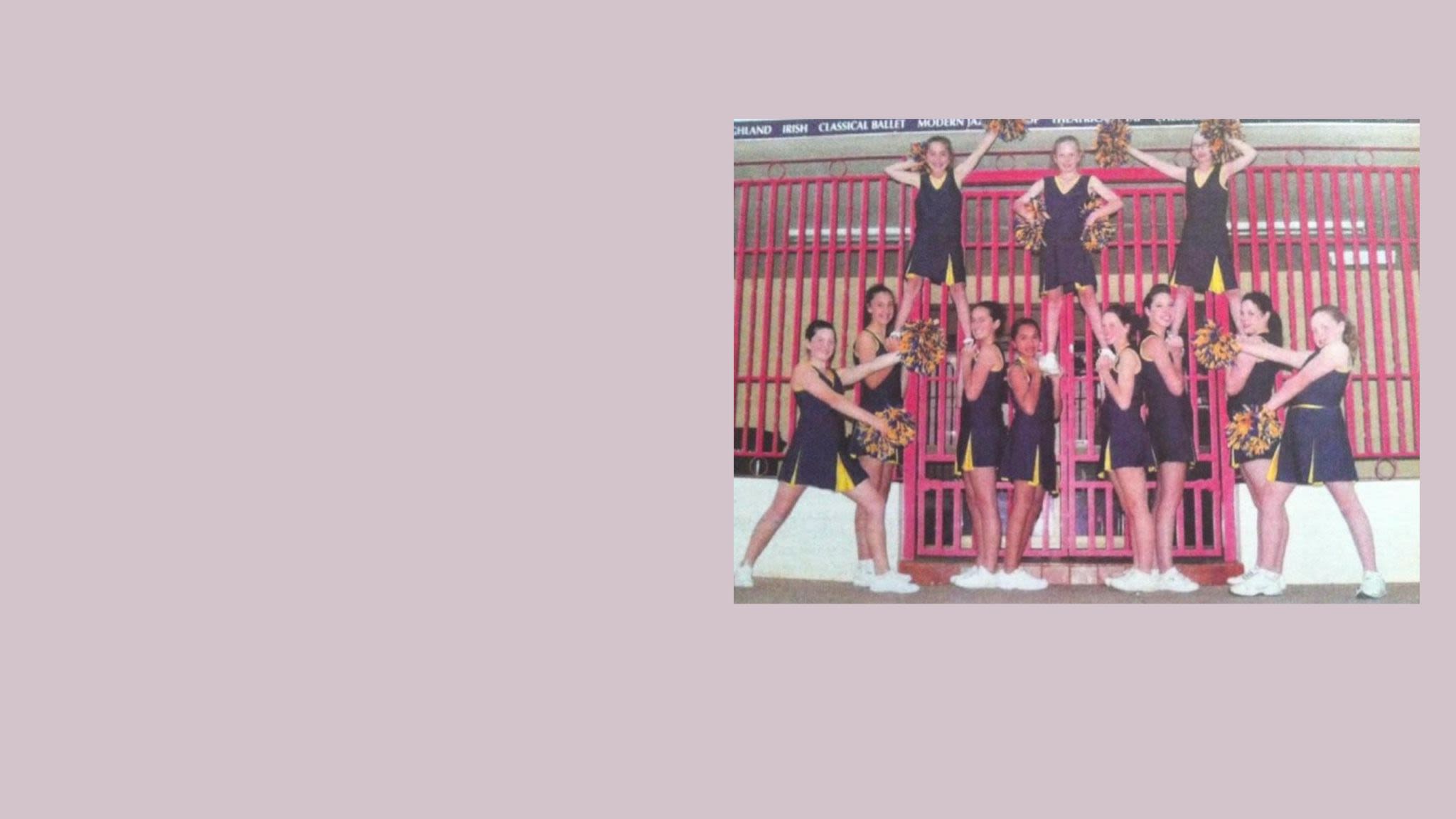
The ICU now works with 10 million cheerleaders across 119 countries, demonstrating significant global interest.
With a strong international following behind competitive cheerleading, the final hurdle on the road to Olympic glory is for the IOC or a host nation to include the sport in a Games.
Ms Dimopoulos says the Olympics would legitimise the cheerleading industry.
“I believe cheerleading’s inclusion in the Olympics will open the door for many to see what is really involved and the hard work that goes in,” she says.
Host nations are authorised to propose a sport for the Olympics, as seen with breakdancing’s inclusion in the Paris 2024 games.
Australia is the next committee able to propose new submissions for the 2032 Brisbane Games.
While some local athletes are hoping that cheer’s Olympic debut will occur on home soil, the absence of a nationally recognised cheerleading organisation could pose challenges for Australian athletes.
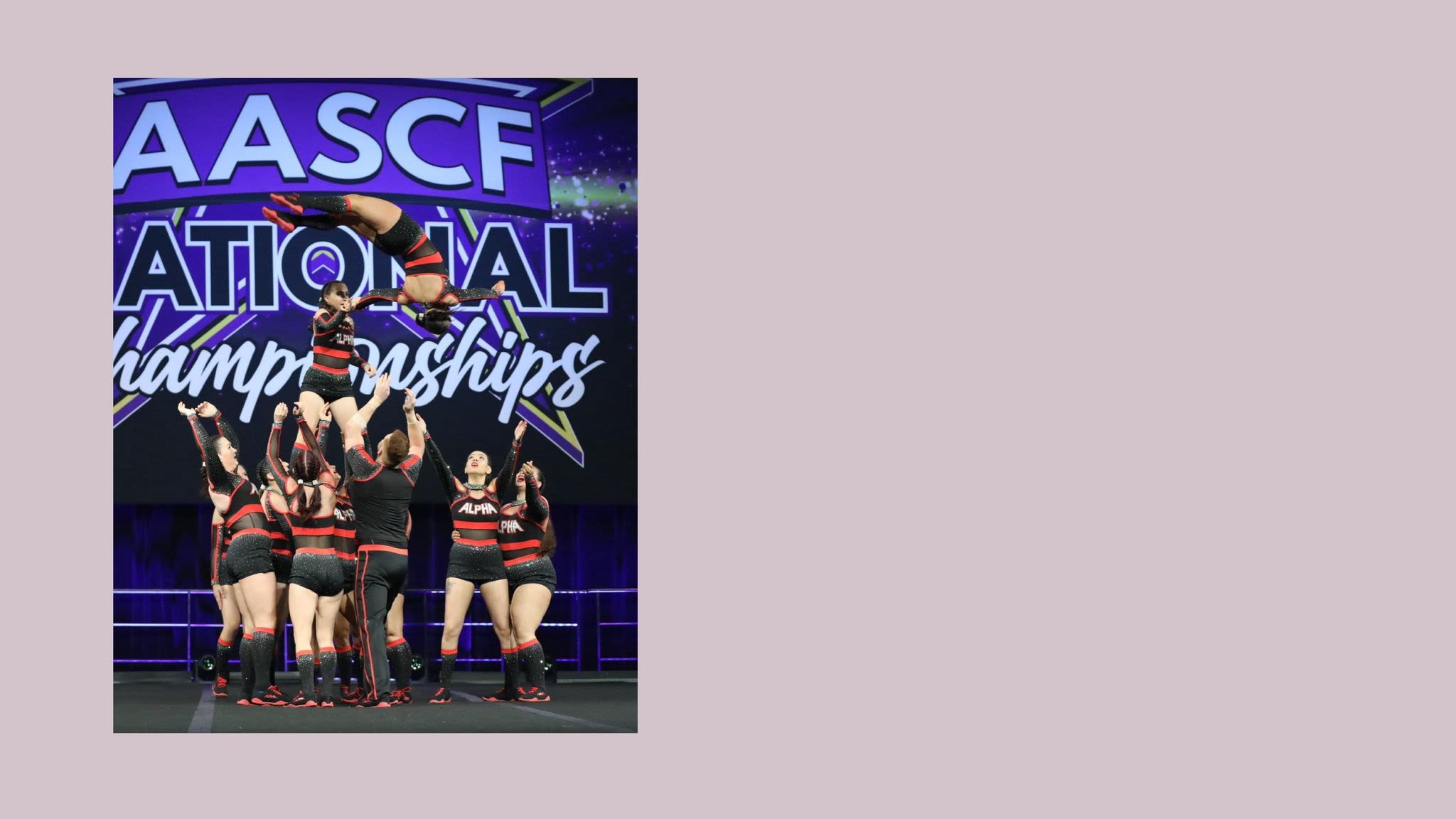
Pyramid sequences are an intricate part of cheerleading routines that rely on cooperation and timing to succeed (Photo by: Tegwen Bescoby)
Pyramid sequences are an intricate part of cheerleading routines that rely on cooperation and timing to succeed (Photo by: Tegwen Bescoby)
Athletes practice their skills wherever they can to perfect their routines (Photo provided by: Kalgoorlie Dance & Cheer)
Athletes practice their skills wherever they can to perfect their routines (Photo provided by: Kalgoorlie Dance & Cheer)
Athletes are routinely tossed into the air as part of cheerleading stunts (Photo by Pixabay)
Athletes are routinely tossed into the air as part of cheerleading stunts (Photo by Pixabay)
Cheerleading competitions are being held across metropolitan and regional Australia in recent years (Photo supplied by: Kalgoorlie Dance & Cheer)
Cheerleading competitions are being held across metropolitan and regional Australia in recent years (Photo supplied by: Kalgoorlie Dance & Cheer)
West Coast Fury team Blackout at the 2024 Cheerleading World Championship (Photo provided: West Coast Fury)
West Coast Fury team Blackout at the 2024 Cheerleading World Championship (Photo provided: West Coast Fury)
In Australia, the federal government elects an organisation to act as the national sporting organisation (or NSO) for each sport.
NSOs act as the pre-eminent body for developing that sport within Australia and are responsible for selecting what athletes will represent their sport at the next Olympic Games.
Currently, cheerleading lacks a recognised NSO.
Cheerleading was once represented by the gymnastics body Gymnastics Australia, however they stepped down following a petition in 2018 led by the Australian Cheer Union.
“[The Australian Cheer Union] feel that Gymnastics Australia lacks basic knowledge about cheerleading and, in failing to understand these fundamentals, fails to encourage growth of the sport in Australia,” the organisation stated in their petition.
Since then, two Australian organisations have put forth applications to the Australian Sports Commission (ASC) to gain national sporting organisation recognition – the Australian Cheer Union, and the Australia Cheer Sports Association – however the applications were rejected.
An Australian Cheer Sports Association representative at the time said the application was denied because two organisations had applied at the same time.
“Sports Australia has stated that the grounds for denial were that two competing organisations had applied for NSO recognition,” the representative said.
“[ASCA] look forward to trying to work with the Australian Cheer Union to create a resolution that brings our organisations together.”
This is the only criterion from the Australian Sports Commission’s NSO requirements that cheerleading failed to meet.
“The ASC will not recognise more than one NSO for a sport,” the organisation’s recognition criteria states.
“Should two organisations assert influence within a sport in Australia, the ASC may elect not to recognise both.”
The absence of a NSO also prevent Australian cheerleaders from accessing government grants that cover training and travel costs.
Australian Sports Commission chief of staff Brooke De Landre says that the lack of cheerleading NSO within Australia limits the support the sport receives from the government.
“The Australian Government is a strong supporter of sport, from the elite level through to grassroots community sport, supporting athletes through programs and grants,” she says.
“Cheerleading does not currently meet the ASC’s criteria for recognition as a national sporting organisation and therefore, is not eligible to receive funding.”
Back in the stands of the AASCF State Competition as she watches her daughter competes to be the best of the best, Ms Manners remains optimistic about the sport's Olympic potential.
"With other sports, you see girls be really invested when they’re young, then less so in adolescence, but when they’re adults they want to participate again,” she says.
“Cheerleading hasn’t had that same dip. Athlete participation is normally very consistent as they grow from children, to teens, to even adults.”
“[Cheerleading] being shown at an event that’s viewed as the pinnacle of sporting excellence, that would really show the world just how much hard work these athletes put into their skills.”

